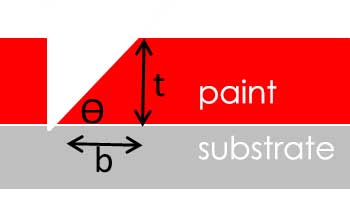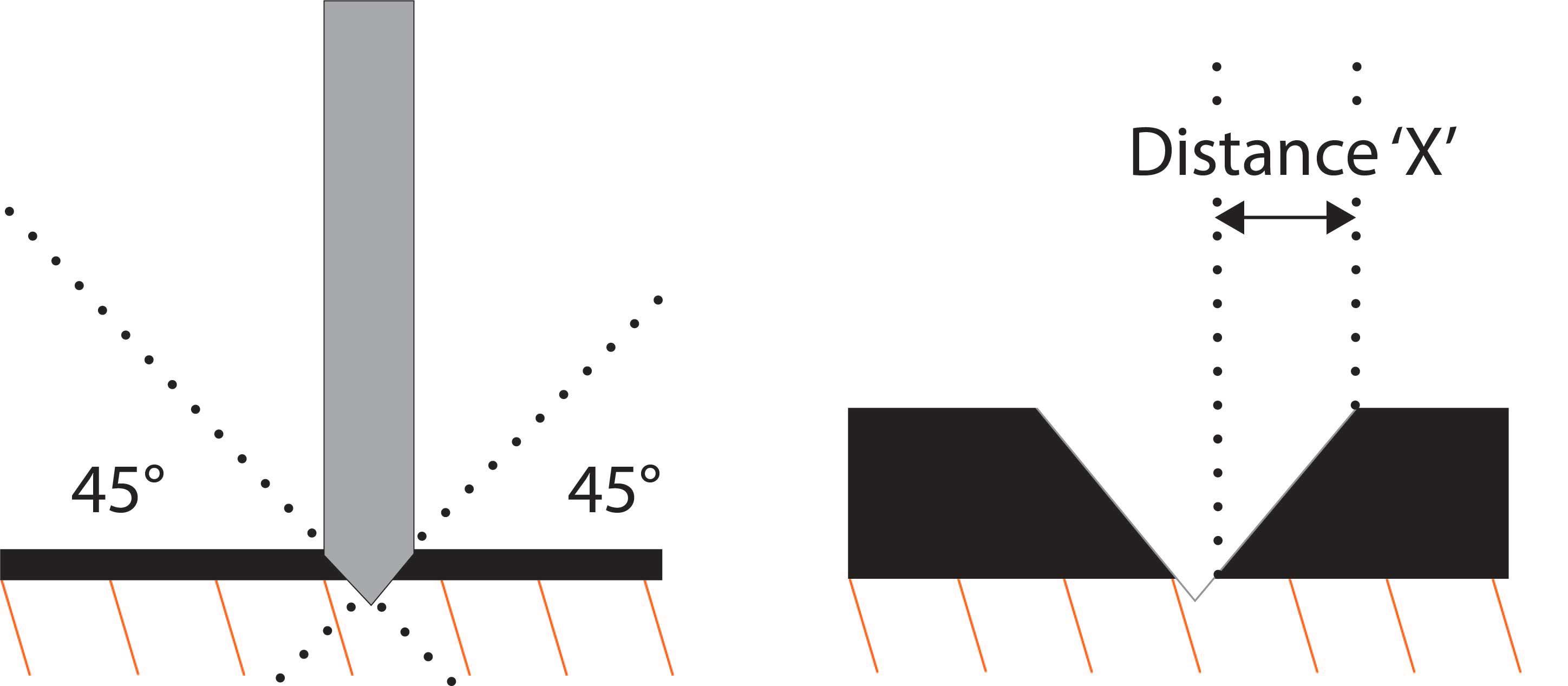
Destructive Dry Film Thickness Measurement
As the title indicates, destructive methods of measuring dry film thickness result in damage to the coating or the substrate. The most obvious way to measure the coating thickness is to remove a sample of the coating and measure the thickness with a micrometer.
Paint Inspection Gauge (PIG) / Tooke Gauge
One of the most recognised, destructive methods in the coating industry is to use a paint inspection gauge (also referred to as a Tooke gauge or the PIG). The PIG is a popular method for determining dry film thicknesses on non-metallic substrates.
PIGs are available in various models. Some contain one cutter with an angled cutting edge suitable for a specific thickness of coating, others, like the Elcometer 141, can store up to three cutters with three different angled cutting edges for use on various thicknesses of coating. Other types of PIG, such as the Elcometer 121/4, have a built-in carousel which can house different angles of cutter for different thickness coatings as the user rotates the carousel to use the cutter of choice.
The measurement principle is based on basic geometry and trigonometry:
- On the surface being measured, a broad line is drawn with a contrasting marker pen.
- Using the PIG, a cut is made at a right angle to the marker line, all the way down and through the substrate.
- Using the supplied microscope, the number of graticule divisions across the coating layer is counted & the thickness value using the graticule scale factor is calculated.
In the example here;
tanθ = t/b
therefore, t = tanθ × b
If the angle is 45°, then
t = b as tan 45˚ = 1
If the angle is 26.6°, then
t = 0.5 × b as tan 26.5˚ = 0.5
If the angle is 5.7°, then
t = 0.1 × b as tan 5.7˚ = 0.1

Different blades are required for different thicknesses. If a 5.7° blade was used on a thick coating for example, then b may be too wide to measure using the microscope. Conversely, if a 45° blade were to be used on a thin coating, then dimension b may be too narrow to measure accurately. However, this method is ideal for measuring multiple layers.
The Säberg Drill
The Säberg Drill works on a similar principle to the PIG, but instead of scoring a line, a conical hole is drilled through the coating to the substrate which minimises the damage to the coating.
As the drill has a 90° angle at its point, the angle at which the coating is cut will be 45°, and hence the coating thickness is equal to the “width” of coating measured.
tan 45° = 1
distance x = coating thickness

Dry Film Gauge
A dry film gauge is simply a dial gauge depth clock which can measure the distance between the level of the coated surface and the substrate level.
A small area of coating is removed or masked off to reveal the substrate and the instrument is placed above the area. The outer base will rest on the coating surface and the central sensor is adjusted to touch the substrate. The coating thickness will then be displayed on the face of the gauge.

The Coulometric Method
The coulometric method involves removing an area of the coating by a process of anodic stripping. The weight of the metallic coating is then determined and the thickness is calculated based on mass per unit area.
An electrolysis test cell, which is filled with an electrolyte specifically selected for stripping the particular coating, is placed on the surface. A constant current runs through the test cell removing the coating which serves as the anode. The current density and surface area being tested are constant, therefore coating thickness is proportional to the time it takes to strip the coating.
The main advantage of this method is for measuring electrically conductive coatings on a conductive substrate.
How Elcometer Can Support You
After launching our very first coating inspection gauge over 70 years ago, Elcometer has continued to design, create and provide reliable, durable and accurate testing equipment to coating inspection professionals across the world.
A range we have since released is our high-performing, portable and easy-to-use destructive coating thickness gauges so coating inspectors can assess the thickness of multi-coat paint with ease. This range features the Elcometer 121/4 Standard & Top Paint Inspection Gauges (P.I.G.) and the Elcometer 141 Paint Inspection Gauge – both offering a quick, versatile method of coating thickness examination.
If you're a coating inspection professional and would like our expert support with measuring a coating's dry film thickness, you can explore our range of Dry Film Thickness Gauges. Alternatively, you can get in touch with one of our global offices or your local distributor and speak to a member of the Elcometer team by heading to our contact page.

